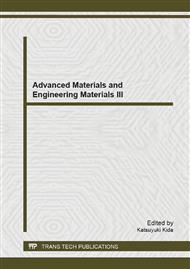p.15
p.19
p.23
p.27
p.31
p.35
p.39
p.45
p.52
Cr, Fe - Doped Anatase TiO2 Photocatalyst: DFT+U Investigation on Band Gap
Abstract:
Photocatalytic hydrogen generation holds promise as the future source of environmentally friendly and economically feasible energy source. In order to conduct more efficient photocatalytic reaction, anatase TiO2 doped with transition metals is proposed as catalyst. Investigation was conducted by using density functional theory (DFT) augmented with Hubbard U treatment to correct the band gap of TiO2. Emergence of new states inside the band gap of doped anatase TiO2 can lead to a material with a better photocatalytic property, i.e., able to work at visible light than that of pristine TiO2 which is sensitive to UV light only. The investigated materials comply with standard hydrogen electrode (SHE), thus can be used as photocatalyst in water splitting reaction. Out of the two options tested, TiO2 doped with Fe produces a material with the better photocatalytic properties.Keywords: DFT + U, anatase TiO2, photocatalytic, water splitting, band gap
Info:
Periodical:
Pages:
31-34
Citation:
Online since:
February 2014
Keywords:
Price:
Сopyright:
© 2014 Trans Tech Publications Ltd. All Rights Reserved
Share:
Citation:


